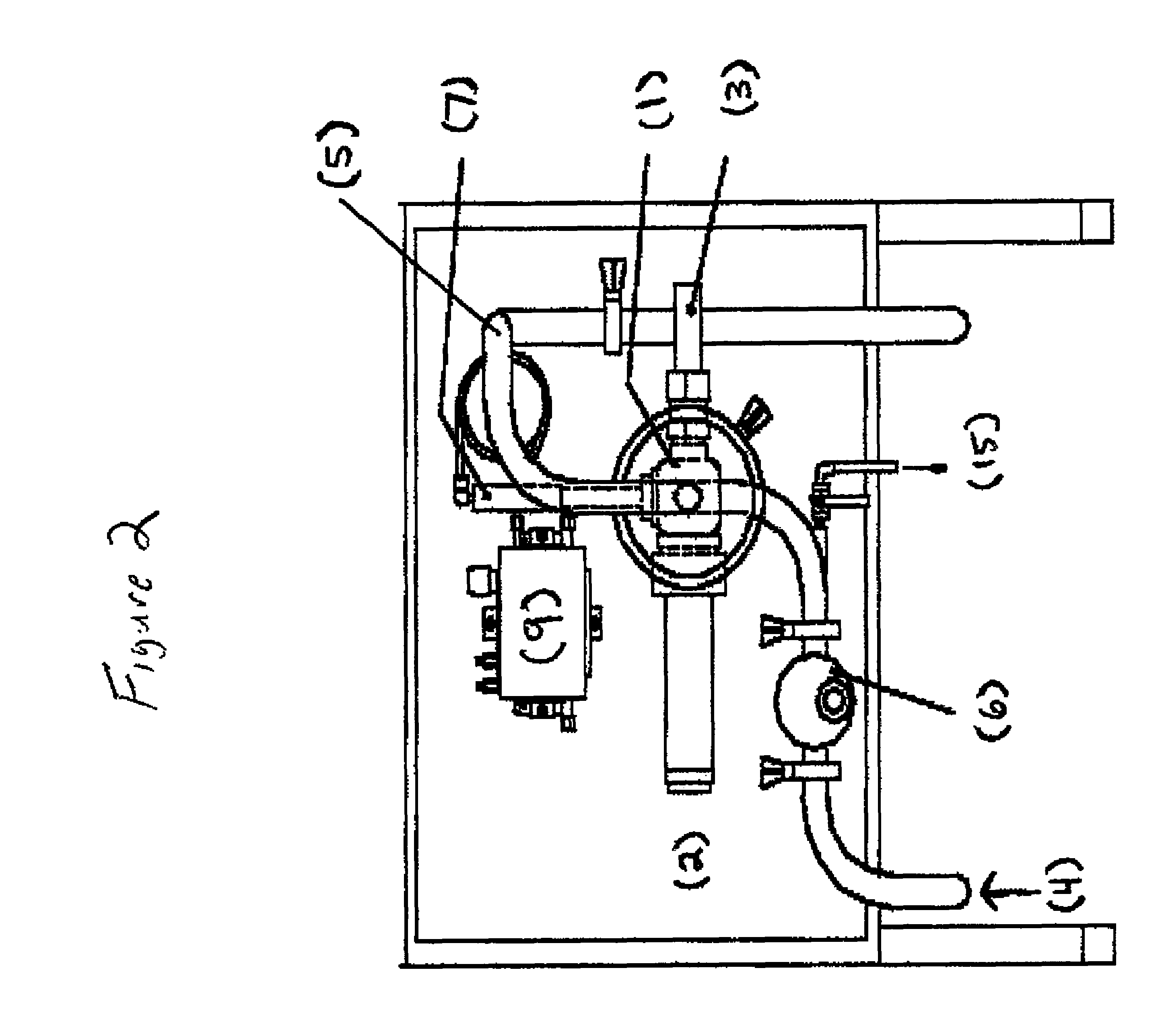Method of monitoring microbiological activity in process streams
a technology of process streams and microorganisms, applied in the field of apparatus for monitoring the activity of microorganisms in process streams, can solve the problems of spoilage and surface odor, offensive odor, and reduced additive function
- Summary
- Abstract
- Description
- Claims
- Application Information
AI Technical Summary
Benefits of technology
Problems solved by technology
Method used
Image
Examples
example 1
[0154]A process stream is drawn into a flow cell via a first conduit. One or more valves regulate flow into a flow cell. A drain associated with the first conduit and one or more valves prevents backup into the process stream or aids in controlling plugging from solids present in the process stream. Under open flow conditions the valve is positioned to allow fluid to pass into the flow cell. Attached to the flow cell are a DO probe, an ORP probe, and a cleaning device (e.g. wiper blade). Fluid passes through the flow cell for analysis.
[0155]Depending on the monitoring (bulk / surface-associated / a combination), the valve is turned in an open position / or closed position to allow fluid into the flow cell and the DO concentration and / or ORP is recorded in accord with one of the above-mentioned process protocols. The fluid that passes through the flow cell exits through a drain. The fluid that flows into the drain can be drained back into the process stream, e.g. into the machine chest of ...
example 2
[0158]A side-stream of paper process water from a paper mill located in Germany was allowed to flow through the monitoring device (2 liters per second). This mill produces coated and uncoated freesheet and uses a stabilized-oxidant for biocontrol. The valve on the monitoring device was opened and closed at 60-minute intervals to start and stop flow into the flow-cell monitoring chamber. ORP and LDO values were measured at 10-minute intervals. Data from the ORP and LDO monitoring devices were collected by a data logger and sent to a web-server for display on a website. Data were downloaded from the website and analyzed to determine the impact of the biocontrol program and process conditions on microbial activity.
[0159]In this application, the invention was used in combination with an OFM to determine the nature / origin of problematic deposits. For example, if deposition and activity are high it is likely that deposits are biological in nature. In contrast, if deposition is high and mi...
example 3
[0160]A side-stream of paper process water from a paper mill located in the U.S. was allowed to flow through the monitoring device (0.25 liters per second). This mill frequently changes the fiber content of the paper product, which can have a dramatic impact on the performance of a biocontrol program. Specifically, this mill uses an Azoto furnish that increases the halogen-demand in the process water system. The valve of the monitoring device was opened and closed at 30-minute intervals to start and stop flow into the flow-cell monitoring chamber. ORP and LDO values were measured at 6-minute intervals. The data from the ORP and LDO monitoring devices were collected by a data logger or downloaded to a computer using the software provided with the monitoring device.
[0161]Shortly after installing the monitoring device, process changes were immediately observed to impact the performance of the biocontrol program based on ORP measurements, microbial activity levels, and surface fouling m...
PUM
| Property | Measurement | Unit |
|---|---|---|
| temperature | aaaaa | aaaaa |
| concentration | aaaaa | aaaaa |
| Δ | aaaaa | aaaaa |
Abstract
Description
Claims
Application Information
 Login to View More
Login to View More - R&D
- Intellectual Property
- Life Sciences
- Materials
- Tech Scout
- Unparalleled Data Quality
- Higher Quality Content
- 60% Fewer Hallucinations
Browse by: Latest US Patents, China's latest patents, Technical Efficacy Thesaurus, Application Domain, Technology Topic, Popular Technical Reports.
© 2025 PatSnap. All rights reserved.Legal|Privacy policy|Modern Slavery Act Transparency Statement|Sitemap|About US| Contact US: help@patsnap.com



